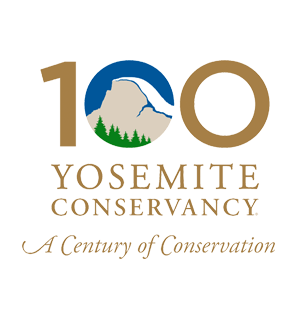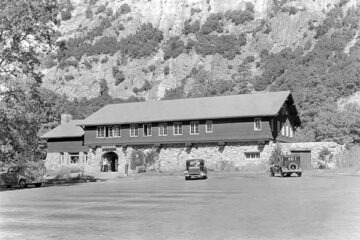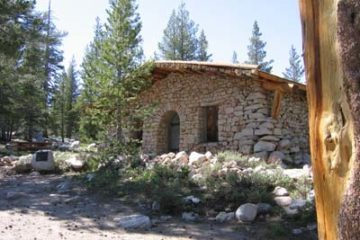Back in 1923, our ancestral organization, the Yosemite Museum Association, became the first nonprofit cooperating partner in the national park system. More than 90 years, several organizational evolutions and tens of thousands of generous donors later, we’ve helped fund more than 600 completed projects in Yosemite.
Many of those projects have focused on restoring and protecting natural resources. You can see the impact of that work all over the park. Here are a few spots to check out on your next visit!
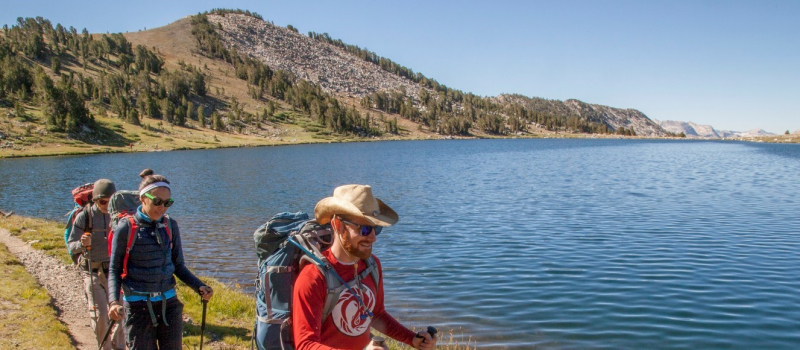
Above: Hikers explore Yosemite’s Gaylor Lakes basin (photo: Keith Walklet). Below: Yosemite restoration staff and volunteers restore the trail system and meadow habitat around Gaylor Lakes.
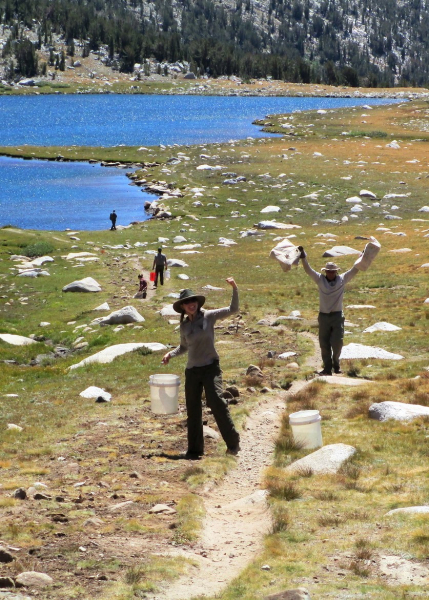
1. Gaylor Lakes
Located just one mile from Tioga Pass, the Gaylor Lakes basin is a tranquil patch of the Yosemite Wilderness, a quilt of subalpine meadow dotted with tarns and streams — and a popular day-hike destination.
In 2013, our donors funded a project to improve the basin’s trails and ensure the well-being of the wetland ecosystem: Crews removed ruts, rebuilt sections of trail to improve drainage, and restored surrounding meadow.
The result? Sustainable trails for hikers, and healthy habitat for high-elevation plants and animals, including the threatened Yosemite toad.
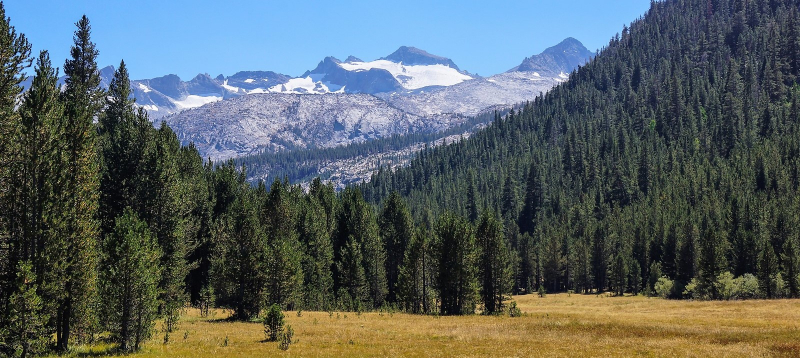
Above: Yosemite’s idyllic Lyell Canyon (photo: Ted Hunting). Below: Crew members transform a former section of the John Muir Trail into healthy meadow habitat.
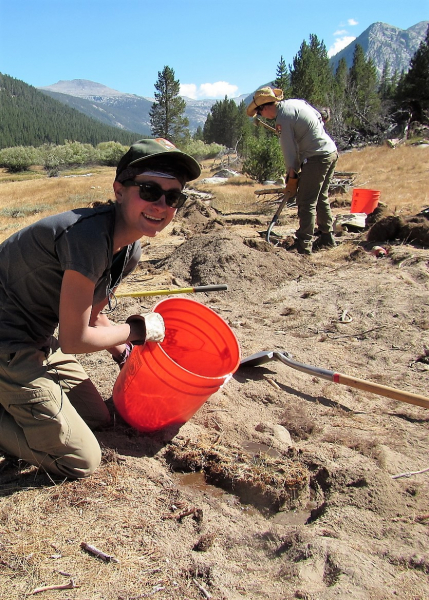
2. Lyell Canyon
The 211-mile John Muir Trail heads north from Happy Isles, makes a U-turn at Tuolumne Meadows, and ends at Mount Whitney. Nine miles of the JMT run through Lyell Canyon, where the story echoes that of nearby Gaylor Lakes: Over the years, hikers inadvertently forged deep ruts as they stepped off the poorly drained trail to avoid mud and water.
In 2012, our donors began funding an effort to reroute the JMT and repair the damaged habitat. As of December 2016, crews had restored approximately 13 acres of meadow and built 9,245 feet of new, well-drained trail.
The work continues this summer — become a donor to support the project, and say hi to the crews if you’re hiking in the canyon, whether you’re on your own or with our naturalist guide!
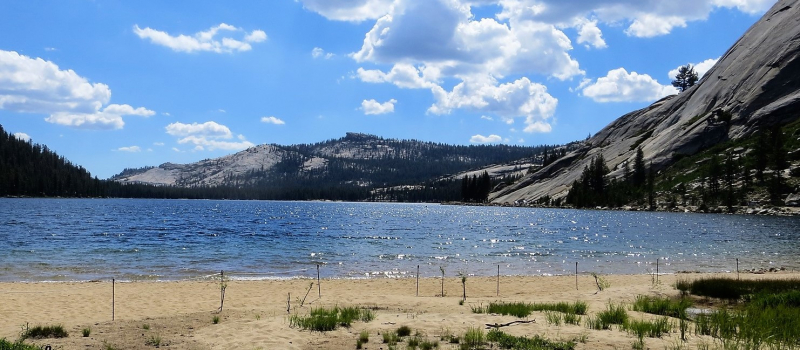
Above: The restored eastern shore of Tenaya Lake (photo: Yosemite Conservancy). Below: Visitors head to the lake’s western shore using a new raised boardwalk.
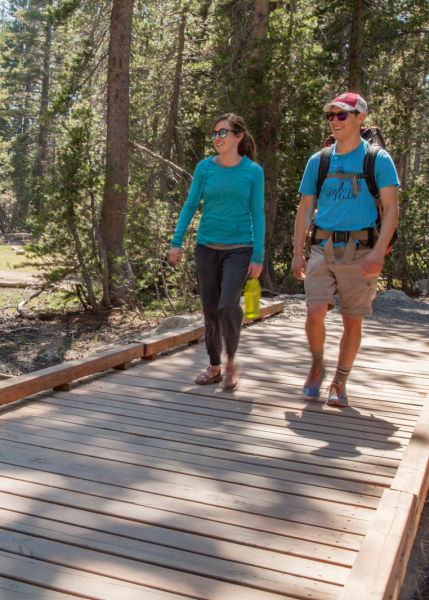
3. Tenaya Lake
Easily accessible from Tioga Road, Tenaya Lake is a classic spot to swim, picnic and soak in impressive Sierra scenery, a sapphire sanctuary surrounded by granite domes.
Recent restoration work has given a new shine to this high country gem.
At the east end, crews built an accessible, environmentally sound trail to the beach, and replanted the eroded shoreline.
On the south shore, they upgraded tread and rock features to create a more hiker- and habitat-friendly trail along the lake.
At the west end, near the Sunrise Trailhead, they replaced a paved causeway with a raised boardwalk, allowing water to flow naturally through the lakeside ecosystem.
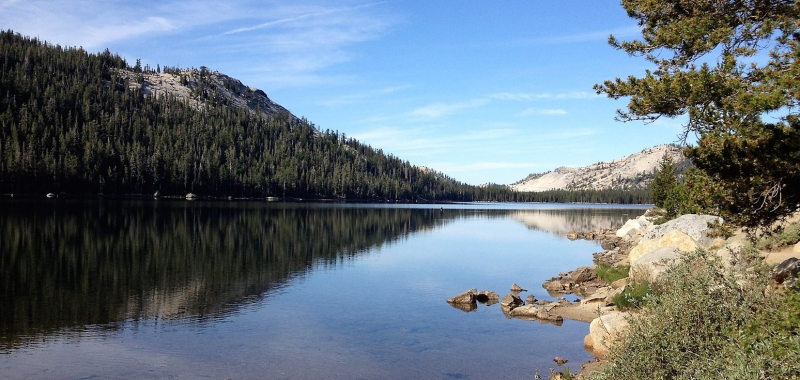
Above: Lukens Lake (photo: Yosemite Conservancy). Below: Wildflowers bloom where a trail once ran through Lukens Meadow.
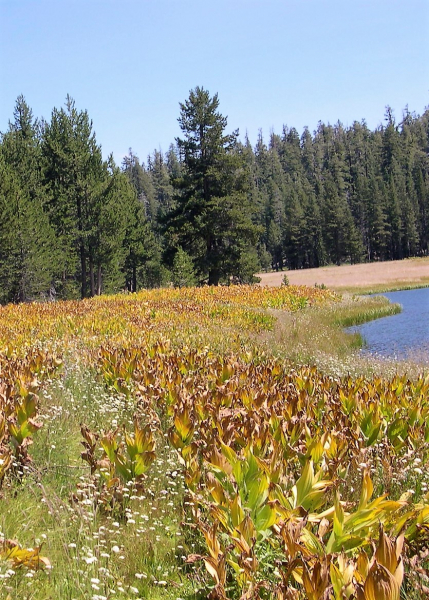
4. Lukens Lake
The original trail to Lukens Lake, a popular wilderness spot that hosts a stunning wildflower show, crossed a creek and passed through the lakeside meadow. As in Lyell Canyon and Gaylor Lakes basin, hikers often left the wet, muddy path to create their own routes; those “social trails” eventually became deep channels that altered natural water flow.
In 2008, crews loosened the compacted ruts and trail, and reshaped and replanted the meadow; now, instead of heading through the wetland, hikers access the lake — and its jaw-dropping floral displays — via a durable trail at the edge of the adjacent forest.
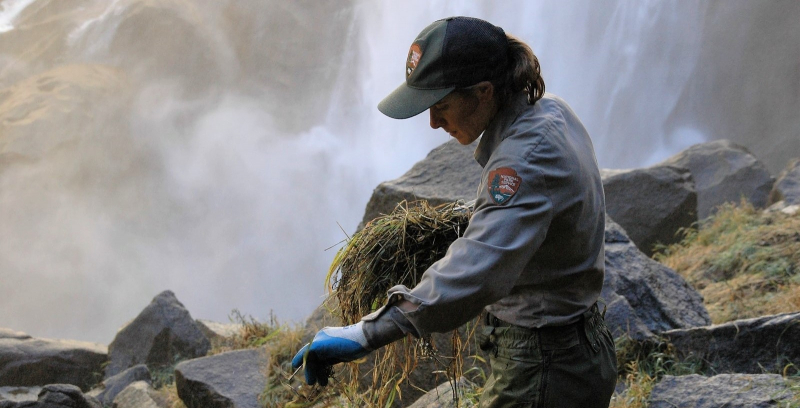
Above: A crew member uses plant material to restore hiker-generated social trails beside Vernal Fall (photo: courtesy of NPS).
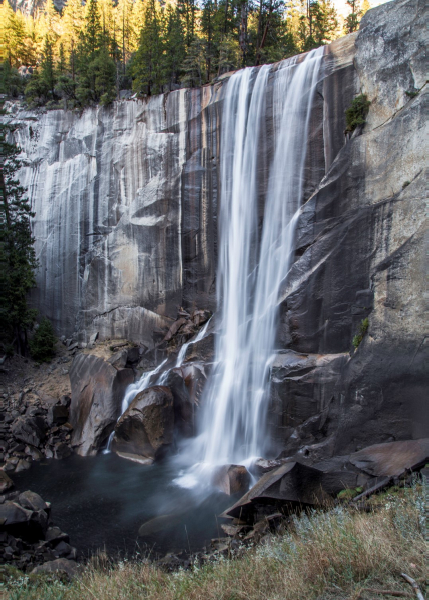
5. Vernal Fall
If you haven’t heard of, or hiked, the Mist Trail, the name says it all: Work up a sweat climbing the steep stone stairway, then cool off in the mist beside a roaring, 317-foot Vernal Fall.
Hikers aren’t the only things drawn to that refreshing spot: The fall’s lush “spray zone” also supports rare plants that thrive in the damp world beside the thundering waterfall.
After observing that hikers habitually headed off the Mist Trail to get closer to the water, endangering themselves and the special flora underfoot, park crews took action. Drawing on a 2015 grant, crews focused on the unofficial offshoot trails that had formed beside the fall, formalizing a few and removing the rest to create a system that allows safe access to the mist and protects the fall-side plants.

Above: Crews work on the trail between Red Peak Pass and Ottoway Lakes (photo: courtesy of NPS). Below: During six seasons in this remote part of Yosemite, crews built stone staircases and other rock features.
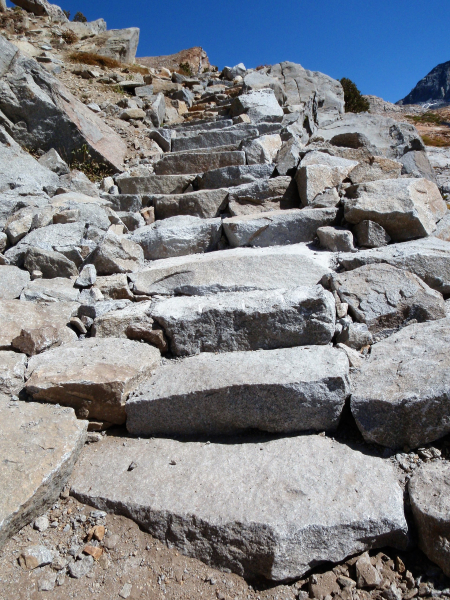
6. Red Peak Pass
Crossing through the Clark Range above 11,000 feet, Red Peak Pass, Yosemite’s highest maintained route, offers rugged hiking and magnificent views from the park’s relatively remote southeastern corner. West of the pass, you’ll find the Ottoway and Merced Pass lakes; to the east, the trail heads toward the Merced Peak Fork and Triple Divide Peak.
In 2006, park crews kicked off a multiyear grant-funded effort to improve the Red Peak Pass trail. Over the course of six seasons, they used dry stone masonry techniques to build walls, steps, waterbars and other features designed to prevent erosion and create a more well-defined, resilient trail. The project was part of a Conservancy campaign that restored 75 miles of trails throughout the park, including at Mount Hoffmann, Mount Dana and Cathedral Peak, and on the JMT.

Above: Yosemite visitors enjoy a ride through history on the Wawona stagecoach (photo: Al Golub). Below: The Hodgdon Homestead Cabin, one of several historic buildings at the Pioneer Yosemite History Center, was restored in 2016 through a Conservancy grant.
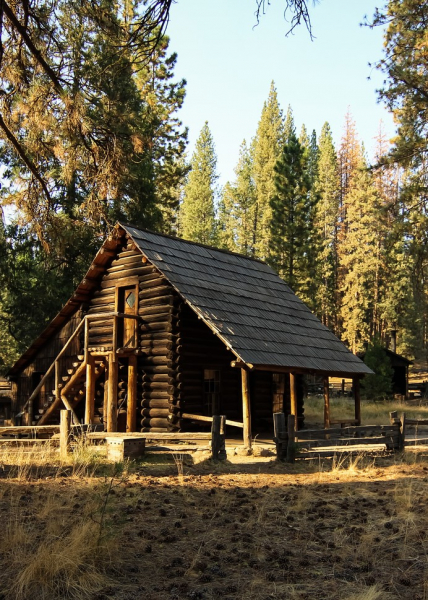
7. Pioneer Yosemite History Center
Wait … what does a collection of log cabins have to do with protecting resources? While many of the restoration projects our donors have funded over the years focus on nature, some speak to another part of the National Park Service’s work: preserving cultural and historical resources.
The Pioneer Yosemite History Center provides a home for an assortment of buildings, including a blacksmith shop, a bakery and a cavalry office, that represent different decades in the park’s past. Gifts from our donors have helped keep this living history hub humming, by funding grants to restore classic structures, including the two-story Hodgdon Homestead Cabin and the Wells Fargo Office, and to replace the stage coach that offers horse-drawn rides to visitors.
Whether you hitch a ride on the stage coach, hike over Red Peak Pass or head to Tenaya Lake for a beach picnic, we hope you get to explore some of the many park resources our donors have helped restore and protect — and then join us to ensure that Yosemite’s trails, habitats and historic places are preserved for generations to come!
Main image: A hiker explores Yosemite’s Red Peak Pass area. Photo: Josh Helling.
